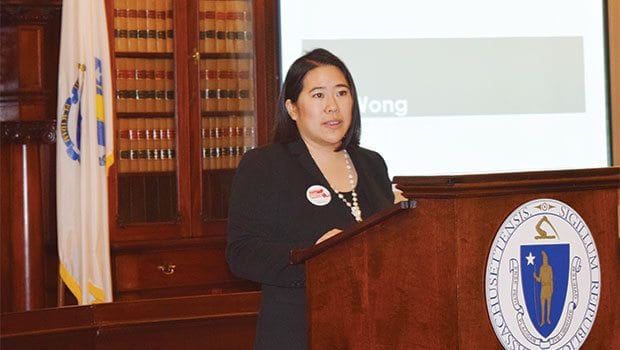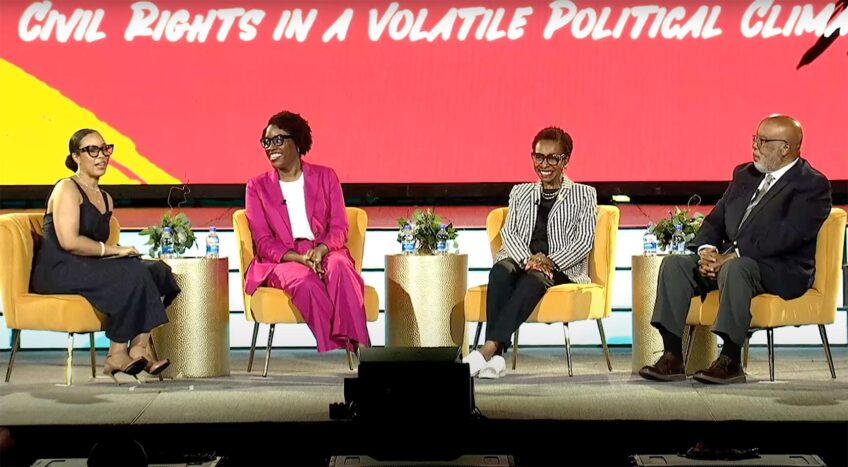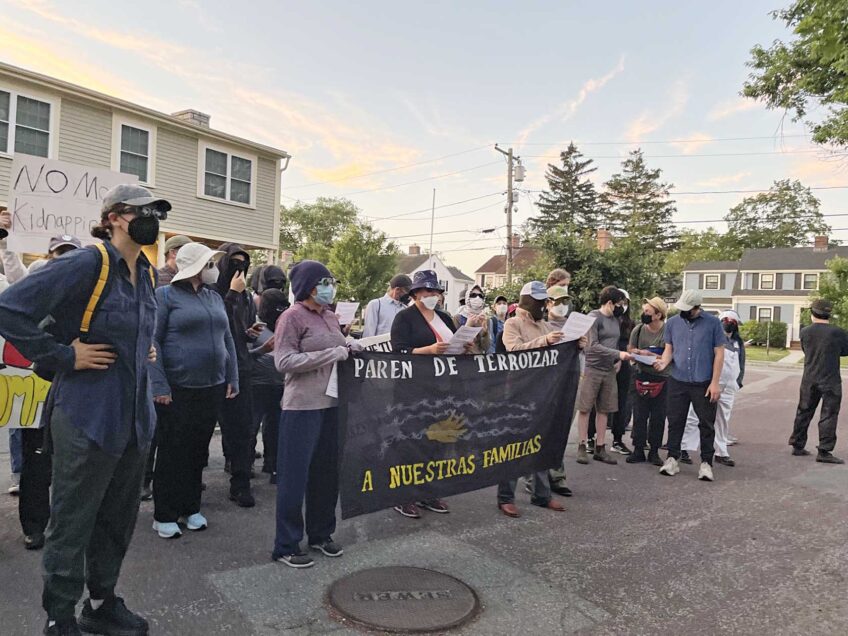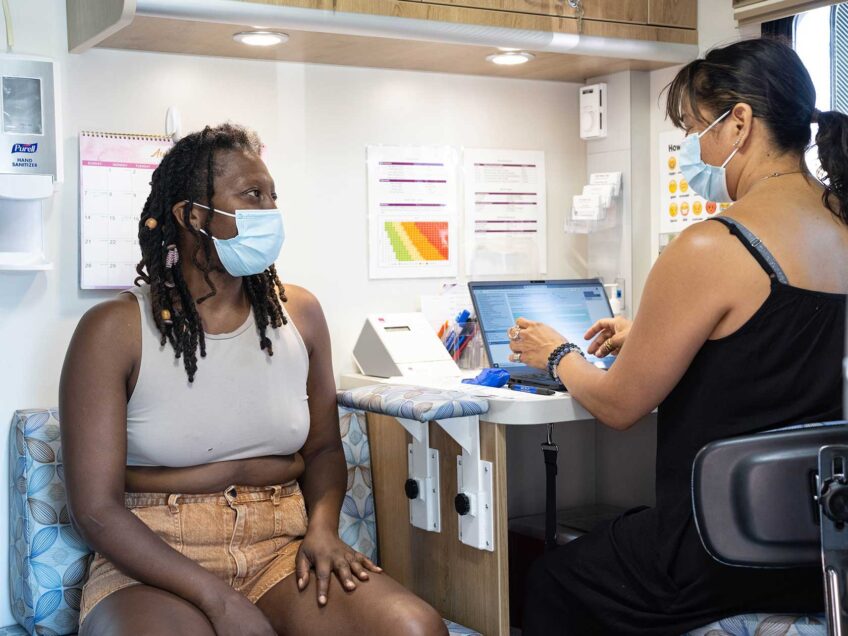
Based on an inventory of social, economic and health indicators, the Metropolitan Area Planning Council has found that from 2011 to 2017, conditions that contribute to inequality in Greater Boston are persisting or getting worse. To help address these disparities, the regional planning agency has released a draft of the 2018 State of Equity in Metro Boston Policy Agenda, intended as a tool to advance policy change on a local and state level.
In 2011, the MAPC released the first State of Equity for Metro Boston Indicators Report, which tracked inequalities in housing, transportation, public health and contaminated environments. Then, five years later, the State of Equity 2017 Update was published, which studied the improvements and setbacks since the last report. The strategies and recommendations in the draft 2018 State of Equity Policy Agenda are based on the State of Equity 2017 Update.
Last Wednesday, Feb. 7, MAPC executive Marc Draisen, and report authors Lizzi Weyant and Barry Keppard presented key points from the policy agenda draft to a packed room at the State House.
“We felt it was important to venture into other areas beyond our core topics of expertise,” said Draisen. “You can’t just pigeonhole all these policy recommendations into being strictly belonging in one silo or another. Many are interdisciplinary.”
He added that when studying housing issues, “We recognize that having a good job is one of the best ways to ensure someone can afford housing, and if you build more housing, it impacts the environment and water use. All these things are related to one another.”
The agenda contains six policy goals: inclusive, diverse communities where everyone can afford to live and thrive; convenient and affordable options to access jobs, schools and recreation; good jobs and pathways to prosperity; affordable and quality education from preschool through college; elimination of harmful environments that leave people sick or injured; and a public safety and justice system that protects residents of all backgrounds.
For each goal, the agenda includes a policy strategy and a policy action to implement that strategy.
Some policy recommendations include updating the Commonwealth’s outdated zoning laws to ensure that most cities and towns will allow more affordable housing to be built, implementing a MBTA fare policy based on riders’ income and increasing the minimum wage to $15 per hour and tying wage increases to inflation.
According to Keppard, there were also six guiding principles that were used to create the policy goals: leading with a racial equity frame; embracing interdisciplinary approaches; working both inside and outside system boundaries; scaling responses to challenges; moving from treating symptoms to fixing root causes; and supporting policies that mitigate and prevent harm from the start.
Keppard said, “We shouldn’t be confined to one system. We should look to new vehicles, new ways to address disparities and new engines of innovation. Although some of these disparities are truly systemic.”
Celina Barrios-Millner, immigrant integration fellow for the Mayor’s Office for Immigrant Advancement, spoke at last week’s policy agenda draft presentation about how policy can drive change, even in seemingly insignificant ways.
“Just putting the word immigrant in our office name is radical itself,” she said. “We didn’t want to use an euphemism.”
Among the key policies the immigrant advancement office supports, said Barrios-Millner, are the Language and Communications Access Ordinance, the Safe Communities Act, and same-day voting registration.
The Language and Communications Access city ordinance would require Boston’s municipal departments to implement a communications access policy for residents who speak a language other than English or who need assistive technology.
The Safe Communities Act is a state bill currently in conference that would prohibit state and local police from arresting or detaining a person solely for federal immigration enforcement purposes.
And same day voting registration would allow eligible voters to streamline their voting and registration process into one simple step, decreasing voting barriers for marginalized communities.
Lisa Wong, the former mayor of Fitchburg and deputy director of the Asian American Civic Association said at the event that to combat disparities, there needs to be policies that “focus on smart growth and zoning.”
She said, “We need these two tools to control displacement, as well as targeted approaches for creating affordable housing around transportation, vibrant open spaces and access to retail.”
Measuring change
Since 2014, MAPC found, there have been only modest advancements towards greater equity. The bright spots include passing legislation that protects transgender individuals, pay equity for women and increasing the minimum wage.
Education indicators have shown standardized test performances for third- and 10th-graders in Metro Boston improved across almost all demographic categories between 2009 and 2015, with the largest gains among black and Latino students.
Also, 2017 data showed instances of low birth weight among babies born to black women declined slightly from 10.4 percent in 2005–2009 to 9.4 percent in 2010–2014 among black women without a high school degree, and from 8.5 percent to 7.2 percent among black women with a college degree.
However, the State of Equity 2017 Update also found that while Boston has become more diverse, it remains socially and economically segregated between racial groups. For example, Latino and white segregation is now higher than it was in 1990.
A fifth of Metro Boston households with the lowest income are earning today only 3 percent more than they were in 2006, while the fifth of households with the highest income are making 15 percent more. Worse yet, black and Latino median household incomes are less than half those of white and Asian households.
Homeownership, a strong measure of prosperity, can still be a far reach for some, and even high-income applicants (earning more than $118,000 per year) who are black are more than twice as likely to be denied a mortgage as high-income borrowers who are white. But, from 2009 to 2015 the denial rate dropped 4.7 percentage points for black applicants and dropped 3.3 percentage points for Latino applicants.
Seeing these deeply entrenched disparities can be demoralizing but Draisen said, “We’re trying to put one foot ahead of the other, in what will be a long road. We’re determined to not be paralyzed by it.”
Available online, the 2018 State of Equity in Metro Boston Policy Agenda draft is open for comments, criticisms and suggestions until early March.






